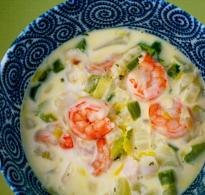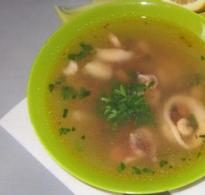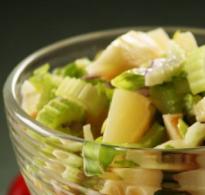Sudanese rose planting and care. Sudanese rose - tea and medicine
Growing a Sudanese rose is not so easy. Many do not know that Hibiscus tea is made from Sudanese roses. Sudanese rose belongs to the genus Hibiscus, which belong to the Malvaceae family. At home, you can grow Chinese rose and Hibiscus Chinese. Moreover, the first one will be a close relative of the Sudanese rose, but hibiscus tea cannot be made from it. Those who grow this plant enjoy its beauty.
The Sudanese rose has dark purple flowers and a green stem with a reddish tinge. In its natural environment, Hibiscus can reach a height of 5 meters. The Sudanese rose is grown in Sudan, India, China, Thailand, Mexico, on the islands of Java and Sri Lanka. The flower of the Sudanese rose is depicted on the coat of arms of Malaysia. In its five petals, Muslims see the five commandments of the Islamic religion.
How is the Sudanese rose grown?
The Sudanese rose is propagated by cuttings and very rarely by seeds. The cutting procedure is carried out in spring or summer. Cuttings of 10 cm are cut from one-year-old shoots, they are watched so that each has 3-4 buds.
Prepared cuttings:
- Planted in a container, to a depth of approximately 3 cm;
- Cover with a film on top;
- Carry out daily spraying, and airing the room in the morning and evening;
- The temperature in the room should be 22 - 25 degrees Celsius.

In the future, the room is ventilated more often. In summer and winter period the temperature in the room should be different. If this is summer, then up to 23 degrees, in the autumn we slowly reduce it to 17 degrees. In winter, the temperature in the room should be at least 16 degrees .
If you do not comply with all these conditions, temperature fluctuations, then the leaves and buds of the plant begin to fall off. Periodically it is necessary to spray the Sudanese rose, but not with cold, but with slightly warm water.
This is a photophilous plant. The light should be bright, but direct sunlight should be avoided. IN winter time additional lighting is needed. Watering the plant should be good, but this must be done very carefully. If the plant is overwatered, the roots may rot. Conversely, if the soil is too dry, the plant can drop buds. In general, the Sudanese rose is a very capricious plant.

In the summer and spring periods, it is imperative to fertilize the plant, according to the instructions that will be written on the package. Usually, these are fertilizers that are intended for flowering plants. You can fertilize only after watering the flower.
About medicinal properties
ABOUT healing properties Sudanese roses were known many years ago. In those countries where the Sudanese rose grows, it is considered a medicine. Tea is made from it. Useful and harmful properties Teas have been known since ancient times. Hibiscus tea contains a large number of vitamin C. It is especially good to drink it during the season of flu and colds. When taking tea in large quantities, its laxative effect is manifested.

There have been many studies on whether tea actually lowers blood pressure. For a month and a half, people suffering from hypertension drank this tea. At the end of the experiment, American scientists found that it really reduces arterial pressure by seven percent. But the debate over what temperature the drink should be taken has not subsided so far. The fruits of the Sudanese rose really have a beneficial effect on our body.
The benefits of tea
A malignant tumor, in other words, cancer, has become a very common disease of our time. It is today the most terrible disease. Hibiscus flowers contain antioxidants that can scavenge free radicals from the human body.

Healing properties of tea:
- Tea, brewed according to all the rules, can relieve heartburn;
- Frequent use of tea can solve such a delicate problem as constipation or atony of the large intestine;
- It is good to use this drink for people who have reduced immunity, it is a strengthening drink, due to the content of a large amount of vitamins and microelements in it;
- If a person has high cholesterol, then drinking this tea reduces it;
- For those people who have a disease like diabetes, this drink helps to ease its course;
- Skin diseases such as psoriasis and eczema may disappear after a course of lotions from this flower;
- If you have swelling, then you should use this tea. It will provide a diuretic effect;
- This drink strengthens capillaries well. It helps those who have cardiovascular disease;
- With a cold, this drink is good to use to reduce the temperature.
Harm to hibiscus
If you healthy man, then drinking this tea will not harm you.
People with certain diseases should simply limit themselves in the use of such tea in order to avoid negative manifestations:
- With extreme caution, it should be used by people suffering from allergies;
- In no case should it be used by those who have increased stomach acidity, because this drink increases it even more;
- Pregnant and young mothers should limit themselves to drinking this drink;
- People with low blood pressure should avoid this tea.

All organisms are different, even the most harmless product that can be used in huge number may harm the body.
The dried petals of the Sudanese rose contain a large amount of tartaric, citric and malic organic acids. They are the reason for the bitter taste of the drink.
Sudanese rose, hibiscus and hibiscus are the names of the same flower. It is not as spectacular as its closest relative, the Chinese one, so it is not often seen in indoor plant collections.
Meanwhile, the plant is widely known for the fact that from its dried perianths are made healing tea hibiscus.
Sudanese Rose (Hibiscus sabdariffa, Scarlet Cocktail) is a perennial herbaceous plant of the Malvaceae family. IN vivo- sprawling shrub with a powerful root system, reaching 3 m 50 cm in height.
young shoots plants are reddish-green in color, lignified look gray-green due to the numerous cracks that cover the bark.
Leaves- rough, oval, on young shoots - with a pointed top.
flowers medium-sized, 6-7 cm in diameter, solitary, sitting on short pedicels. Petals - a rich red hue, less often - pink, cream, purple. Perianths - dense, fleshy, dark red.
Hibiscus tea, the raw material for which is the Sudanese rose, is useful for nervous exhaustion and metabolic disorders.
However, if a person has acidity, a stomach ulcer, urolithiasis, he should not drink such tea.
What you need to know about carcade:
Is it possible to grow a Sudanese rose at home?
The flower comes from tropical latitudes, where in winter the temperature rarely drops below + 15 ° C.
That's why V open field it can only be grown in the south providing secure cover. Most often this plant is grown as a houseplant.
Features of planting and caring for hibiscus
Growing in an apartment
The plant prefers flowerpots according to the size of the root system. In tight spaces, it will develop poorly and look oppressed, and in too spacious, the roots may rot.
Tip: choose heavy ceramic flowerpots for Sudanese roses. Plastic for this plant is not stable enough.
For growing Sudanese roses at home you need to prepare a nutritious soil mixture from equal parts of leaf and sod land, rotted humus and river sand.
Before planting the plant in the prepared soil mixture, it must be calcined in the oven for 30-45 minutes. This will eliminate most pests and pathogenic bacteria. Such treatment will not affect the quality of the soil.
As a drain you can use coarse river sand or expanded clay of medium fraction. The drainage layer should be at least 4 cm.
Tip: if there is no purchased drainage at hand, you can put crushed stone washed and calcined in the oven on the bottom of the flowerpot.
In the first two or three years, the Sudanese rose needs an annual transplant., then transplanted every two or three years. Adult specimens that are more than 8-10 years old only replace the top layer of soil by 5 cm.
Pinch the tops of young shoots regularly. This contributes to better branching of the bush and the laying of flower buds, which are formed only on the shoots of the current year.
Hibiscus feels equally good both in bright sun and in partial shade. However, the lack of sunlight can adversely affect its flowering.
In the afternoon hours, the plant should be shaded.
Like all hibiscus, the Sudanese rose is thermophilic. Optimum temperature for her - +23 - + 25 ° C.
Watering the Sudanese rose after the top layer of soil dries out. Water for irrigation should be separated, warm. IN summer time watered abundantly, in winter - moderately.
For abundant flowering Sudanese rose fertilize with fertilizer for flowering plants or special ones designed for hibiscus.
Sudanese rose or hibiscus:
In the open ground
Sudanese rose can be grown in the flower bed as an annual. Rooted cuttings are planted in open ground in spring or early summer, when the air temperature at night does not fall below + 15 ° C.
Planting material is harvested in advance: in July-August, during planned pruning.
To do this, cuttings with four to five internodes are cut with a sharp knife or pruner and kept for 1 hour in a solution of any root formation stimulator.
After that planted in plastic cups filled with light soil with the addition of perlite or vermiculite, moisten and place under a plastic bag.
Tip: if there is no root formation stimulator at hand, you can use aloe juice - cut off a piece of the bottom leaf 5-6 cm long, stick a cutting into it and leave it for 1-1.5 hours.
After that, without washing off the juice, land in the prepared soil mixture.
In a month, regrown roots will be visible through the transparent walls of the glasses. After that, the cuttings transplanted into small pots and care for them as described above.

A plant in a flower bed quickly turns into a beautiful bush, strewn bright colors. It is undemanding to watering, steadfastly withstands direct sunlight, is content with one or two top dressings.
This plant is outdoors will bloom until cool weather.
After that, it can be transplanted into a flowerpot and transferred to the wintering place in the room. With the advent of spring, the shoots are shortened and the plant is planted in a flower bed.
Growing problems
Sudanese rose is quite unpretentious. The main thing that she needs when growing on a windowsill is regular watering and humidity.
If the soil in the flowerpot dries out, the plant will immediately drop the buds. To prevent this from happening, you need to check the soil moisture with a toothpick.
Daily spraying or an indoor fountain will help to cope with dry air.

Preparing for winter
Plants grown outdoors can be left to overwinter in a flower bed. For this the aerial part is cut off.
The roots are covered with a cardboard box, and spruce branches are thrown on top. You can additionally cover the roots with sawdust.
If the plant is not frozen, in the spring it will grow back and please with especially lush flowering.
Protection against diseases and pests
spider mite. In winter, when the air in the apartment is dry, the Sudanese rose is often affected by spider mites. A thin cobweb entangling the internodes, and small holes on the lower part of the leaves are signs of the appearance of this pest.
The leaves affected by the mite begin to turn yellow and crumble. If the plant is not treated in a timely manner with an insecticide, it may die.
The best prevention of the appearance of spider mites is regular spraying.
Chlorosis. A lack of iron, zinc or magnesium in the soil can cause chlorosis. This disease is characterized by gradual yellowing of the leaves. However, they do not fall off.
Spraying and watering with a solution of iron chelate effectively act against chlorosis. If the lesion was small, the leaves turn green again. In more advanced cases, the natural color returns unevenly.
Tip: so that hibiscus sabdariffa does not suffer from chlorosis, instead of water, you can water and spray it with infusion of onion peel.

Due to certain difficulties associated with maintenance and care, hibiscus sabdariffa is grown much less frequently than China rose. This is only possible for an experienced grower.
From distant India, an amazing plant has reached us - hibiscus. Magnificent large red flowers conquered not only gardeners: the taste of the drink from them was also appreciated by tea lovers. Do you want to forget about the problems with high blood pressure, increase vitality, strengthen blood vessels and acquire slim figure? Drink hibiscus! The benefits and harms of this drink will make you look at it in a new way.
Sacred flower that gives health
A bright red drink that tastes like a sour fruit compote is prepared from the flowers of the hibiscus plant. The petals are harvested and dried, then packaged - and hibiscus begins its journey around the world.
The Sudanese rose belongs to the Malvaceae family. It is grown in all countries with a tropical climate. But this plant enjoys special honor in Egypt, where hibiscus is considered national drink. The inhabitants of Sudan also respect him, as they believe that the 5 petals of this flower symbolize the 5 commandments of Islam.
People use all parts of the plant. Cups are used in the kitchen - jelly, jam, cakes are made from them. Young shoots and leaves fall on the table as vegetables. But hibiscus gained amazing popularity thanks to its tasty and healthy drink- hibiscus.
In our area, hibiscus is mistakenly called tea, although it is not at all such. It is correct to call it a decoction or infusion.
Delicious Therapy: The Benefits of Hibiscus Tea
According to residents Arab countries, Hibiscus - a cure for all diseases. Brew yourself a cup of this tea - and get whole set useful amino acids, vitamins, trace elements, antioxidants, organic amino acids. And besides, you can quench your thirst even on the hottest day and enjoy good taste and fresh fragrance.

What are the beneficial properties of the hibiscus drink?
- It has a positive effect on health and well-being, cleanses the body of harmful neoplasms (prevents the development of cancer).
- It is a natural ally in solving the problem of jumping pressure. How does hibiscus tea affect blood pressure? The benefits and harms of pressure depend on the form in which this drink is consumed. Cold tea will lower the pressure, and hot - will increase. If everything is in order with the pressure, then it is better to drink this drink warm.
- Since hibiscus contains vitamin C, tea will effectively support immunity during the cold season, and also help relieve stress, nervous tension, and restore strength.
- It will help bring down the temperature, so it is useful for them to drink the patient with a fever.
- Has an antispasmodic effect.
- Drinking a drink made from hibiscus - good way normalize cholesterol.
- With the help of a glass of hibiscus, you can relieve a hangover.
The most pleasant thing for the representatives of the weaker sex will be the fact that, using delicious tea, you can also get rid of excess weight. Possessing a diuretic effect, it removes excess fluid from the body. At the same time, the fruit acids, which are retained in the flowers, stimulate the metabolism. All this contributes to weight loss.
To lose weight, hibiscus should be drunk 3 weeks after meals three times a day. Then they take a break for 10 days. If the desired result is not achieved, the course is repeated.
Tea is useful for women to drink with irregular, painful and too heavy menstruation. This drink has an analgesic effect and "pacifies" bleeding.
Tea is shown not only to ladies: it has long gained a reputation natural aphrodisiac. To avoid problems with potency, sometimes it is enough to use hibiscus tea. The benefits and harms for men will depend only on the amount of drink consumed.
To whom is hibiscus tea contraindicated and what harm can it bring?

Despite the abundance useful properties, the "drink of the pharaohs" is not suitable for everyone. Who better to refrain from hibiscus compote? Contraindications to its use are such diseases and conditions:
- children's age up to 1 year;
- the last months of pregnancy;
- low pressure;
- gastritis, ulcer (localized in the stomach or duodenum). The ban on the use of hibiscus is due to the fact that it contains a lot of acids;
- urolithiasis, gallstones. Since tea has a diuretic effect, it can provoke colic;
- allergy. People suffering from it should drink such tea with caution for the first time;
- taking antitumor and antihypertensive drugs is better not to combine with the use of infusion, as this will enhance the effect of drugs.
Tea is better to drink in the morning, because it has a high tonic effect. If you drink it at night, it will be difficult to fall asleep.
But also to a person with good health in some cases, the Sudanese rose to hibiscus can harm. The benefits and harms of any product, including tea from rosella flowers, can change dramatically if a person is too keen on using it. Optimal quantity tea, which can be drunk a day with health benefits - 3 cups.
If this dose is exceeded, then the pressure may drop to critical levels. Excessive consumption of tea can result in constipation.
The height of this shrub ornamental flowering plant reaches 2 meters, girth up to 1 m. The leaves are oval, elongated with jagged edges. Large delicate flowers up to 25 cm in diameter are painted only in Sudanese roses in bright red color. Other types of hibiscus have flower colors ranging from white, yellow, lilac, bronze, brick to dark red.
One flower lives for a day, but the flowering of the whole plant lasts up to 3 months.
Sudanese rose. Care and transplant
Like any indoor plant, the Sudanese rose is afraid of the cold, so it should be placed in the southern, southwestern part of the room, without direct sunlight. You can extend the flowering period by increasing daylight hours with fluorescent lamps, but not incandescent or halogen lamps.
The plant has a stiff trunk and is quite massive, so the soil for planting must be made heavy. Mixed part of the leafy land, part of the greenhouse, five parts of soddy, clay soil and two parts of river sand. The mixture should not be waterlogged and stick together when compressed. When transplanting, an inspection and removal of damaged roots is carried out. A small Sudanese rose is planted in a small pot and replanted annually.
As the flower grows, the pot is enlarged. An adult plant needs to be transplanted once every three years and grows well in a tub with a capacity of up to one hundred liters. In care, hibiscus is capricious. Sudden changes in temperature and drafts lead to a drop in flowers. For irrigation use warm softened water with a hardness of 9-11%. An adult plant needs pruning if the branches grow long and without foliage.
Cut wounds are smeared with wax or garden pitch. For alignment and the formation of lateral shoots on some branches of the crown, pinch off the upper buds. To clean the leaves, it is advisable to spray with water. room temperature. Indoor humidity plays an important role in growing flowers. The main sign of dryness is the drying of the leaves from the tips. Humidification is achieved by spraying the bush with settled water.
Sudanese rose. Nutrition and transplant
Young Sudanese rose, like everyone else houseplants, during the growth period, needs to be fed, but the dose of fertilizer is applied less than for an adult bush. Feed with liquid fertilizer once a week. The dosage indicated on the package must be strictly observed. Fertilizing with bacterial fertilizers has a positive effect. Microorganisms living in the soil (azotobacter) contains the drug Azotobacterin.
These bacteria convert nitrogen from the air into plant-friendly nitrogen compounds. Azotobacterin is applied to moist soil simultaneously with ash, superphosphate and manure. Processing the land in a pot with a weak solution of potassium permanganate will slow down its souring.
In order to transplant a plant, lignified hibiscus cuttings are rooted in open ground or in a special solution. Cuttings are prepared during the dormant period, when there is no flowering - in March-April. The stalk is processed with aloe juice, which is a growth stimulating root formation substance.
The stalk planted in the soil is covered glass jar or other transparent material and protect from the sun. Keep the temperature at 25 degrees. Roots form after 4 weeks. A sign of rooting will be the appearance of a new leaflet at the top of the cutting. Then, together with a clod of earth, the stalk is planted in a permanent prepared pot.
Diseases and pests
More often sudanese rose suffers from spider mites, miner and aphids.
If the discoloration of the leaves is noticeable, then the spider mite probably attacked the plant. Spraying a decoction of cyclamen tubers, a solution of green soap and pyrethrum, or a solution of the chemical preparation thiophos on a tree will destroy the pest.
The aphid, a sucking insect, is very prolific and grows up to 20 generations per season. Migrates over different plants. Therefore, it is necessary to treat all existing plants with a solution of nicotine or anabasin sulfate twice with a week break.
Miners are some types of flies and it is impossible to prevent them from laying eggs.
The fight against them comes down to the physical destruction of the clutches, crushing them on the leaves. Cut severely affected leaves. Woody plants are sometimes affected by bacterial cancer, growths, ecobasidiosis. From them, the plant turns yellow and withers. There is no cure, and such a plant is destroyed.
You can protect against leaf damage by anthracosis, downy mildew by treating hibiscus with a solution of foundationazole.
Sudanese rose. This is interesting:
Only the Hibiscus sabdariffa plant is completely edible, from leaves, flowers to roots. Its seeds are easily found in hibiscus tea bags. The Sudanese rose is grown on an industrial scale for food purposes in Egypt, Sudan, China, India, Mexico, Thailand and Sri Lanka. Received in the medicine of the Arab countries the name - a cure for many diseases.
The hibiscus drink is bright red, sweet and sour the taste is prepared from dark red flower petals and calyxes of Hibiscus sabdariffa. The drink contains antioxidants, anthocyanins, citric acid, vitamins and organic acids. All these substances have a positive effect on humans and have antipyretic, diuretic and antispasmodic properties.
Drink is contraindicated peptic ulcer and increased stomach acid.
A plant that makes it possible not only to diversify the diet of residents of countries in tropical regions, but also supplies food and cosmetic dyes, raw materials for ropes and medicines, must be large in size. At home, Sudanese hibiscus can reach a height of up to five meters. At home, the most grateful specimens of the Malvov representative grow up to two meters in height. special attention deserve:
- root system rosella, which is a mixed version, in which there are main and secondary rods, and there is also a well-developed lobe. Subject to careful attitude to the roots of the plant during transplantation, as well as timely prevention of pest damage, it is the root system that allows the hibiscus to endure adverse conditions.
- Leaves Sudanese roses attract attention with a dark green color. The leaf shape is trefoil. The leaf plate itself is serrate, mostly bare and shiny. The arrangement of the petiole leaves is alternate, and the length often reaches fifteen centimeters.
Hibiscus leaves are not only dark green. There are varieties of plants whose leaves have a variegated color.
- Flowers- the main pride of rosella. Bright and large, with tubes formed from stamens protruding above the surface of the petals. The peculiarity of the flowers of any variety of Sudanese rose can be seen by looking at the edges of the petals. They are distinguished by a ragged serrated marginal structure. original form flower makes it amazingly beautiful, regardless of whether the surface of the petals is smooth or terry.
- hibiscus trunk- smooth. Villi are absent, and the color of the bark varies from gray to brown, or even black, on old, woody parts of the trunk. The high strength of the trunk of the Sudanese rose is achieved with the help of a fibrous substance that is part of the bark.

How to care?
Hibiscus Sudanese rose is considered one of the most unpretentious in the care of houseplants. Its cultivation does not require special efforts, but it is necessary to follow certain rules.
Only in this case, Rosella will please you with brilliant bright leaves, and large flowers.
- Landing. A plant purchased in a store, or grown from cuttings or seeds, is planted in a specially prepared earthen mixture. It can be bought ready-made, but experienced flower growers prefer to prepare the soil on their own. For the soil mixture you will need leaf and sod land, peat, sand. A drainage layer of river pebbles or small stones is laid at the bottom of a spacious dish.
The plant is planted without strong deepening and watered abundantly after planting.

Frequent drying leads to the dropping of buds by hibiscus.
- Like many moisture-loving plants, the Sudanese rose needs not only proper watering, but also regular spraying. In winter, due to the functioning of the central heating, it is possible to increase the humidity with the help of humidifiers. In summer, or high temperature air in winter, the plant must be plentifully and often sprayed.
Regular spraying protects the plant from aphids!
- Fertilization carried out regularly after abundant watering. The plant is fed every week, using organic and mineral fertilizers. To increase the intensity of flowering, phosphate-containing compounds are suitable. The dormant period provides for top dressing no more than once a month.
- It is best to place rosella on a light windowsill, as the plant loves bright light. In winter, it is necessary to organize additional lighting.
- Air temperature in the room where the Sudanese hibiscus is located, it should be within 25 degrees in summer, subject to frequent ventilation, and not lower than 12 degrees in winter.
 In order for the Sudanese rose to be able to live its usual period of twenty or more years, in addition to a special watering regimen and regular top dressing, it is imperative to follow pinching and cutting.
In order for the Sudanese rose to be able to live its usual period of twenty or more years, in addition to a special watering regimen and regular top dressing, it is imperative to follow pinching and cutting.
Pruning is carried out every year and stimulates abundant flowering. The reason is that flowers appear only on young shoots. Pinching and pruning not only form the desired shape of the bush, but also cause the active growth of young shoots, on which flowers subsequently bloom.
The cut point must be treated with garden pitch.
In order to enjoy large, up to 16 cm in diameter flowers, it is worth parting with old and diseased shoots. Hibiscus blooms mostly in summer. But, if desired, the flowering period can be shifted, providing the plant with an unscheduled dormant period and reducing the intensity of watering. The reward will be exotic flowers various shades. Flowers, mostly odorless, although some varieties have a pleasant aroma, bloom in the early morning, and wither after sunset. The fragility of flowering is compensated big amount blossoming buds.

Diseases and pests
In order to get at least twenty flowers daily on a medium-sized hibiscus bush, care must also be taken to protect the plant from pests and diseases. Most often, hibiscus are attacked greenhouse aphids, scale insects and spider mites. Fighting greenhouse aphids is the easiest task. Enough to apply spraying with Actellik. It is more difficult to fight with a scale insect and a spider mite. pests needed wash off the plant using for this purpose soap solution. Then, just as in the case of greenhouse aphids, spray with Actellic solution.
 The disease known as vascular wilt, leaves practically no chance for a diseased plant. Vascular wilt is caused by Fusarium and Verticillium fungi. The name of the genus of fungi gave the name to the diseases - fusarium and verticillium. You can extend the life of a plant that has become ill with vascular wilt, using pruning diseased branches. But, unfortunately, it will not be possible to significantly affect the process of death of hibiscus.
The disease known as vascular wilt, leaves practically no chance for a diseased plant. Vascular wilt is caused by Fusarium and Verticillium fungi. The name of the genus of fungi gave the name to the diseases - fusarium and verticillium. You can extend the life of a plant that has become ill with vascular wilt, using pruning diseased branches. But, unfortunately, it will not be possible to significantly affect the process of death of hibiscus.
reproduction
You can give life to a new plant using one of three ways:

Regularly following simple advice for the care and reproduction of Sudanese hibiscus, even a novice florist will be able to create a piece of tropical paradise on his windowsill. The main thing is to perform all the necessary actions regularly.






